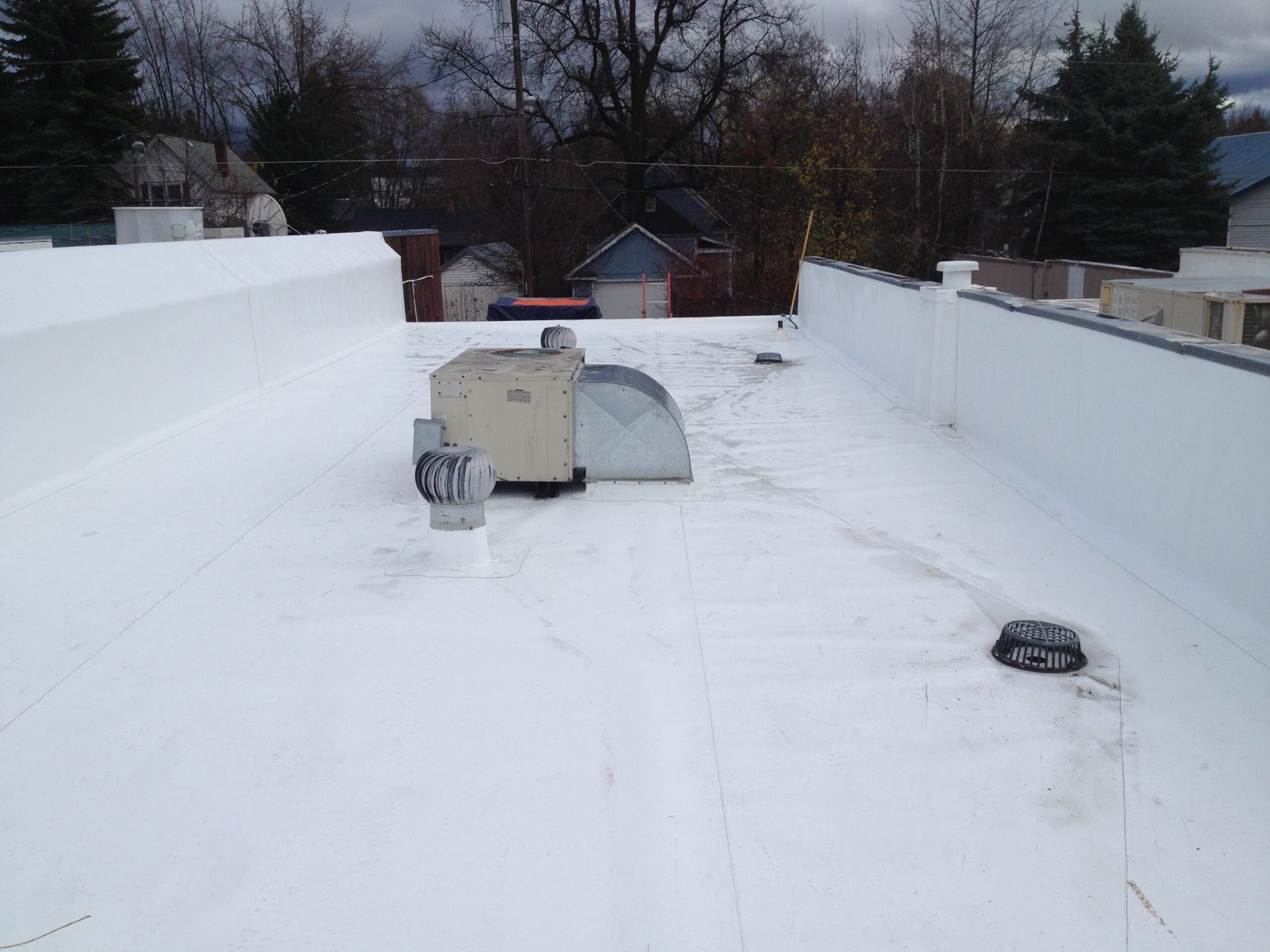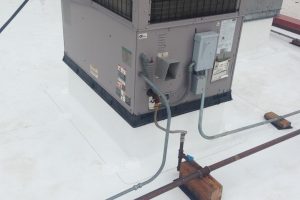Maintaining a flat, single-ply roof, whether on a residential or commercial building, involves navigating a set of unique challenges that differ significantly from those associated with more traditional sloped roofs. Roofers and builders love single-ply systems because they’re budget-friendly, long-lasting, and energy efficient. These benefits come with a price tag. Bi-yearly cleaning and 3 annual inspections are recommended to prevent minor issues from turning into major emergencies.
1. Water Drainage
One of the most significant challenges with flat roofs is water drainage. Unlike sloped roofs, which naturally guide water runoff to the gutters, flat roofs can allow water to pool. Left to sit, water can become a silent destroyer, eating away at your roof’s defenses and opening the door to costly repairs. Regular maintenance must ensure that drainage systems are not blocked and are adequate to handle the water load, especially in areas with heavy rainfall or snow.
2. Debris Accumulation
Flat roofs are prone to accumulate debris such as leaves, branches, and dirt. Debris accumulation can bring drainage systems to a grinding halt, resulting in stagnant water and the kind of wear and tear that can add up quickly over time. Commercial buildings have another guilty party when it comes to debris blockage: the equipment that keeps them running smoothly, like HVAC units. Regular cleaning and inspections are necessary to keep the roof clear and functional.
3. Weathering and UV Exposure
Single-ply roofs are not as vulnerable to weathering and UV exposure as many other roof materials. Materials like PVC or TPO, while durable and resistant to many elements, can still suffer from UV-induced wear over time if not serviced. Even though single-ply roofing materials can be prone to UV damage, manufacturers require regular inspections and maintenance.
4. Membrane Puncture
Flat roofs are more susceptible to punctures from foot traffic or equipment installation and maintenance. Even small punctures can let water seep through and damage the underlying structure. Rooftop safety risks are pretty common, but implementing walk pads and conducting regular checks can significantly reduce those risks, especially after roofing work.
5. Adhesive Degradation
Single-ply roofs typically use adhesives to secure the membrane to the walls, curbs and decking. As the years go by, adhesives can lose their sticking power, causing roofs to develop pesky bubbles or puckering that undermines their ability to keep the rain out. FlatTopRoofing, Inc ensures that the correct type of adhesive is used for your specific application.
Maintaining Your Flat Roof


